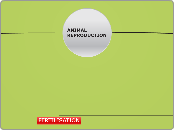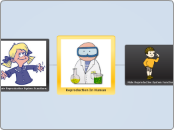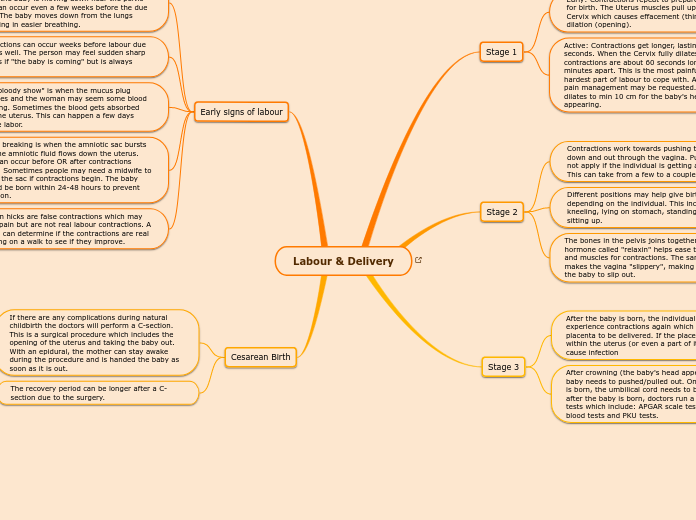Sex Ed
Birth Control
Abstinence
No sex
Hormonal Methods
Norplant
Emergency Contraceptive Pill
Depo Provera
Birth Control Pills
Surgical Methods
Vasectomy
Tubal Ligation
Traditional Method
Douching
Calendar Method
Basal Body Temperature
Withdrawal
Barrier Methods
Diaphragms
The diaphragm is a thin skeletal muscle that sits at the base of the chest and separates the abdomen from the chest. It contracts and flattens when you inhale. This creates a vacuum effect that pulls air into the lungs. When you exhale, the diaphragm relaxes and the air is pushed out of lungs.
Male Condom
Male condoms are made from very thin latex (rubber), polyisoprene or polyurethane and are designed to stop a man's semen from coming into contact with his sexual partner.
Intrauterine Device
A small, plastic T-shaped device that is placed inside the uterus (the small, hollow, pear-shaped organ in a woman's pelvis in which a fetus develops) to prevent pregnancy. Intrauterine devices prevent sperm from fertilizing an egg, and prevent fertilized eggs from implanting in the uterus.
Female Condom
It protects against pregnancy and sexually transmitted infections (STIs). The female condom is a soft, loosefitting pouch with a ring on each end. One ring is inserted into the vagina to hold the female condom in place. The ring at the open end of the condom remains outside the vagina.
Spermicides
Spermicide is a contraceptive substance that immobilizes or kills sperm before they enter the uterus. This single-use applicator contains a spermicide gel. Spermicide can be used alone or with a barrier method such as a condom, diaphragm or cervical cap to prevent pregnancy.
Sponge
The contraceptive sponge contains spermicide, which blocks or kills sperm. Before having sex, you insert the sponge deep inside the vagina so that it covers the cervix. Your vaginal muscles hold it in place. The contraceptive sponge has a strap on one side for easier removal.
Cervical Cap
The cervical cap keeps sperm from entering the uterus by covering the cervix. For added protection, spermicide is put into the cap before inserting the cap snugly over the cervix. The cap can be put in several hours before having sex, and must be left in at least 6 hours after sex.
STI's
Trichomoniasis
An infection caused by Trichomonas vaginalis, a microscopic,
single-celled organism that can be found in the urethra, bladder, vagina, cervix, or under the foreskin.
HPV
Most HPV infections clear on their own within one to two years
Vaccination is available to prevent certain types of HPV
High-risk HPV types are associated with cancer (mainly of the cervix)
Low-risk HPV types cause anogenital warts and other benign lesions
It is estimated that 75% of the adult population will have at least one HPV infection during their lifetime
There are over 100 types of HPV; 40 can cause anogenital infection
One of the most common sexually transmitted infections
Candidasis
Yeast is normally found in a woman’s vagina. When the fungus begins to grow in excess, it may develop into candidiasis.
Candida can also affect the mouth, esophagus, skin or blood.
75% of women develop vaginal candidiasis at least once in their lifetime
HIV
Weakens the immune system over time (months to years) until other infections occur and Acquired Immunodeficiency Syndrome or AIDS (the fatal stage of HIV infection) develops
Virus that destroys cells critical to a person’s immune system, robbing the body of its ability to fight other infections and illnesses.
Hepatitis B
Most common in developing countries
Chronic infection can significantly damage the liver
Most infected people (90%) naturally produce antibodies to fight disease, but some develop chronic hepatitis B; they carry the virus all their lives and are infectious for life
A virus found in blood and body fluids including the vaginal secretions, semen, breast milk and saliva of infected individuals
A virus that affects the liver
Pubic Lice & Scabies
Adult insects bite and feed on the blood of their host and lay small eggs (nits) that attach to the shaft of the hair
Tiny crab-like insects that nest in pubic hair; also found in chest, armpit and facial hair, eyebrows and eyelashes
Genital Herpes
May cause a single outbreak or recurrences over time
Herpes simplex virus (two types: HSV-1, traditionally associated with cold sores, and HSV-2, traditionally associated with anogenital herpes)
Syphilis
Infectious in the first year after contraction
Progresses in stages
An infection sometimes called the great imitator because symptoms mirror those of some common medical conditions
Gonorrhea
Often occurs as a co-infection with chlamydia
Can affect the cervix, urethra, rectum, throat, and occasionally the eyes
Most common in individuals 15 to 29 years
Two-thirds of reported cases in Canada are in men
The second most common bacterial STI
Chlamydidia
Can affect the cervix and urethra, and occasionally the rectum, throat, and eye.
Greatest number of infections found in people 15 to 24 years old
The most common bacterial sexually transmitted infection
Male
Bulbourethral glands
The bulbourethral glands, or Cowper’s glands, are pea-sized structures located on the sides of the urethra just below the prostate gland. These glands produce a clear, slippery fluid that empties directly into the urethra. This fluid serves to lubricate the urethra and to neutralize any acidity that may be present due to residual drops of urine in the urethra.
Ejaculatory ducts
These are formed by the fusion of the vas deferens and the seminal vesicles. The ejaculatory ducts empty into the urethra.
Testicals
The testes are oval organs about the size of very large olives that lie in the scrotum, secured at either end by a structure called the spermatic cord. Most men have two testes. The testes are responsible for making testosterone, the primary male sex hormone, and for producing sperm. Within the testes are coiled masses of tubes called seminiferous tubules. These tubules are responsible for producing the sperm cells through a process called spermatogenesis.
Penis
Semen, which contains sperm, is expelled (ejaculated) through the end of the penis when the man reaches sexual climax (orgasm). When the penis is erect, the flow of urine is blocked from the urethra, allowing only semen to be ejaculated at orgasm.
The body of the penis is cylindrical in shape and consists of three internal chambers. These chambers are made up of special, sponge-like erectile tissue. This tissue contains thousands of large spaces that fill with blood when the man is sexually aroused. As the penis fills with blood, it becomes rigid and erect, which allows for penetration during sexual intercourse. The skin of the penis is loose and elastic to allow for changes in penis size during an erection.
The penis is the male organ for sexual intercourse. It has three parts: the root, which attaches to the wall of the abdomen; the body, or shaft; and the glans, which is the cone-shaped end of the penis. The glans, which also is called the head of the penis, is covered with a loose layer of skin called foreskin. (This skin is sometimes removed in a procedure called circumcision.) The opening of the urethra, the tube that transports semen and urine, is at the tip of the glans penis. The penis also contains a number of sensitive nerve endings.
The urethra is the tube that carries urine from the bladder to outside of the body. In males, it has the additional function of expelling (ejaculating) semen when the man reaches orgasm. When the penis is erect during sex, the flow of urine is blocked from the urethra, allowing only semen to be ejaculated at orgasm.
Scrotum
The scrotum is the loose pouch-like sac of skin that hangs behind the penis. It contains the testicles (also called testes), as well as many nerves and blood vessels. The scrotum has a protective function and acts as a climate control system for the testes. For normal sperm development, the testes must be at a temperature slightly cooler than the body temperature. Special muscles in the wall of the scrotum allow it to contract (tighten) and relax, moving the testicles closer to the body for warmth and protection or farther away from the body to cool the temperature.
Prostate Gland
The prostate gland is a walnut-sized structure that is located below the urinary bladder in front of the rectum. The prostate gland contributes additional fluid to the ejaculate. Prostate fluids also help to nourish the sperm. The urethra, which carries the ejaculate to be expelled during orgasm, runs through the center of the prostate gland.
Epididymis
The epididymis is a long, coiled tube that rests on the backside of each testicle. It functions in the carrying and storage of the sperm cells that are produced in the testes. It also is the job of the epididymis to bring the sperm to maturity, since the sperm that emerge from the testes are immature and incapable of fertilization. During sexual arousal, contractions force the sperm into the vas deferens.
Vas Deferens
The vas deferens is a long, muscular tube that travels from the epididymis into the pelvic cavity, to just behind the bladder. The vas deferens transports mature sperm to the urethra in preparation for ejaculation.
Seminal Vesicles
The seminal vesicles are sac-like pouches that attach to the vas deferens near the base of the bladder. The seminal vesicles produce a sugar-rich fluid (fructose) that provides sperm with a source of energy and helps with the sperms’ motility (ability to move). The fluid of the seminal vesicles makes up most of the volume of a man’s ejaculatory fluid, or ejaculate.
Female
Reproductive System
Cervix
The cervix or cervix uteri (Latin, 'neck of the uterus') is the lower part of the uterus in the human female reproductive system. The cervix is usually 2 to 3 cm long (~1 inch) and roughly cylindrical in shape, which changes during pregnancy.
Rectum
The rectum is a part of the lower gastrointestinal tract. The rectum is a continuation of the sigmoid colon, and connects to the anus. The rectum follows the shape of the sacrum and ends in an expanded section called an ampulla where feces are stored before their release via the anal canal.
Bladder
The urinary bladder is a muscular sac in the pelvis, just above and behind the pubic bone. When empty, the bladder is about the size and shape of a pear. Urine is made in the kidneys and travels down two tubes called ureters to the bladder. The bladder stores urine, allowing urination to be infrequent and controlled.
Urethra
The female urethra is embedded within the vaginal wall, and its opening is situated between the labia. The female urethra is much shorter than that of the male, being only 4 cm (1.5 inches) long. It begins at the bladder neck and opens to the outside just after passing through the urethral sphincter.
Labia Majora
The labia majora (“large lips”) enclose and protect the other external reproductive organs. During puberty, hair growth occurs on the skin of the labia majora, which also contain sweat and oil-secreting glands.
Bartholin's Glands
These glands are located next to the vaginal opening on each side and produce a fluid (mucus) secretion.
Labia Minora
The labia minora (“small lips”) can have a variety of sizes and shapes. They lie just inside the labia majora, and surround the openings to the vagina (the canal that joins the lower part of the uterus to the outside of the body) and urethra (the tube that carries urine from the bladder to the outside of the body). This skin is very delicate and can become easily irritated and swollen.
Clitorus
The two labia minora meet at the clitoris, a small, sensitive protrusion that is comparable to the penis in males. The clitoris is covered by a fold of skin, called the prepuce, which is similar to the foreskin at the end of the penis. Like the penis, the clitoris is very sensitive to stimulation and can become erect.
Vagina
The vagina is a canal that joins the cervix (the lower part of uterus) to the outside of the body. It also is known as the birth canal.
Uterus
The uterus is a hollow, pear-shaped organ that is the home to a developing fetus. The uterus is divided into two parts: the cervix, which is the lower part that opens into the vagina, and the main body of the uterus, called the corpus. The corpus can easily expand to hold a developing baby. A canal through the cervix allows sperm to enter and menstrual blood to exit.
Ovary
The ovaries are small, oval-shaped glands that are located on either side of the uterus. The ovaries produce eggs and hormones.
Fallopian Tube
These are narrow tubes that are attached to the upper part of the uterus and serve as pathways for the ova (egg cells) to travel from the ovaries to the uterus. Fertilization of an egg by a sperm normally occurs in the fallopian tubes. The fertilized egg then moves to the uterus, where it implants to the uterine lining.









